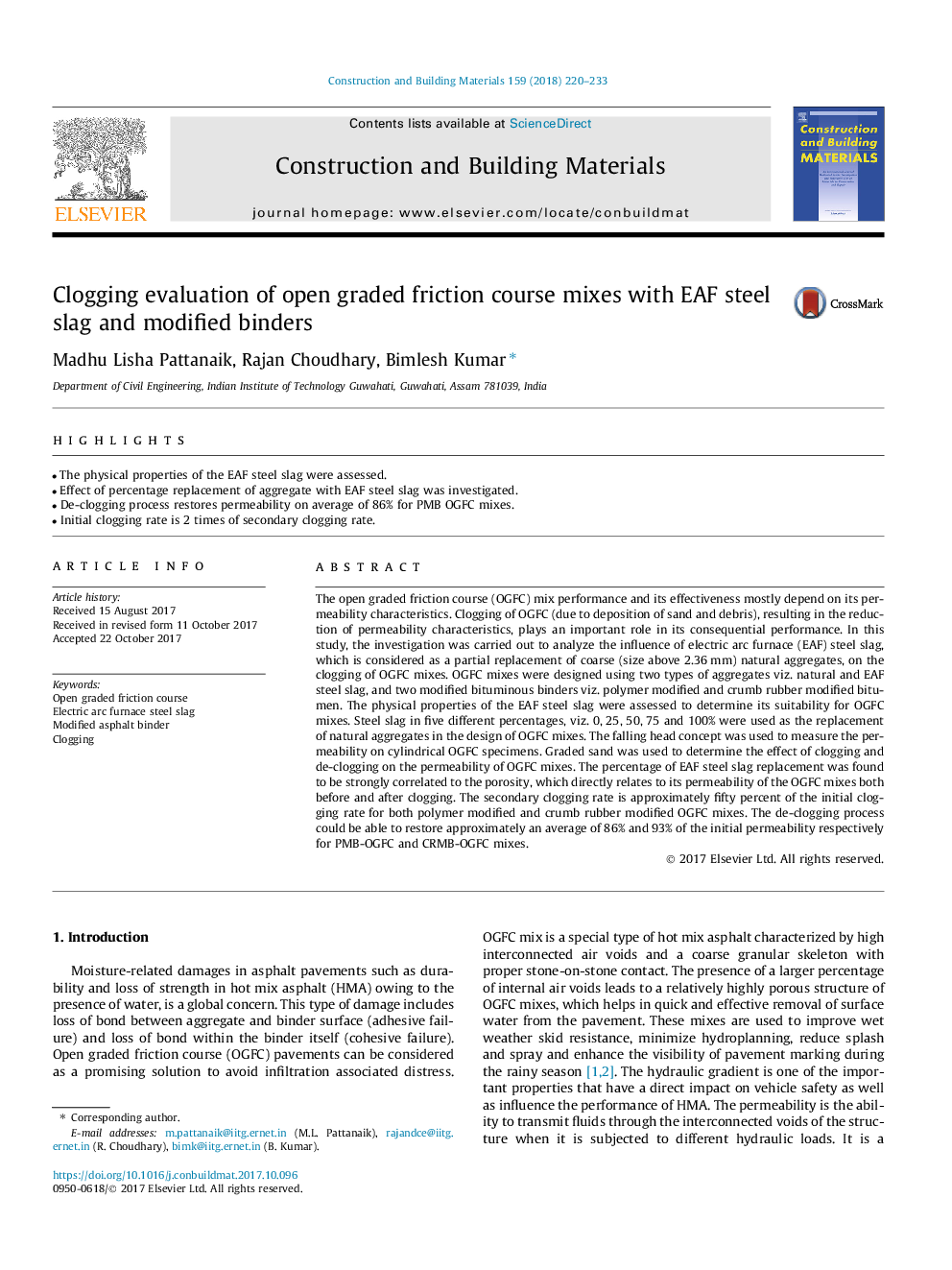| Article ID | Journal | Published Year | Pages | File Type |
|---|---|---|---|---|
| 6717346 | Construction and Building Materials | 2018 | 14 Pages |
Abstract
The open graded friction course (OGFC) mix performance and its effectiveness mostly depend on its permeability characteristics. Clogging of OGFC (due to deposition of sand and debris), resulting in the reduction of permeability characteristics, plays an important role in its consequential performance. In this study, the investigation was carried out to analyze the influence of electric arc furnace (EAF) steel slag, which is considered as a partial replacement of coarse (size above 2.36â¯mm) natural aggregates, on the clogging of OGFC mixes. OGFC mixes were designed using two types of aggregates viz. natural and EAF steel slag, and two modified bituminous binders viz. polymer modified and crumb rubber modified bitumen. The physical properties of the EAF steel slag were assessed to determine its suitability for OGFC mixes. Steel slag in five different percentages, viz. 0, 25, 50, 75 and 100% were used as the replacement of natural aggregates in the design of OGFC mixes. The falling head concept was used to measure the permeability on cylindrical OGFC specimens. Graded sand was used to determine the effect of clogging and de-clogging on the permeability of OGFC mixes. The percentage of EAF steel slag replacement was found to be strongly correlated to the porosity, which directly relates to its permeability of the OGFC mixes both before and after clogging. The secondary clogging rate is approximately fifty percent of the initial clogging rate for both polymer modified and crumb rubber modified OGFC mixes. The de-clogging process could be able to restore approximately an average of 86% and 93% of the initial permeability respectively for PMB-OGFC and CRMB-OGFC mixes.
Related Topics
Physical Sciences and Engineering
Engineering
Civil and Structural Engineering
Authors
Madhu Lisha Pattanaik, Rajan Choudhary, Bimlesh Kumar,
